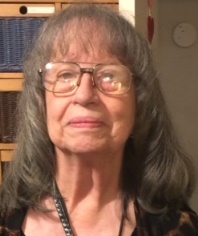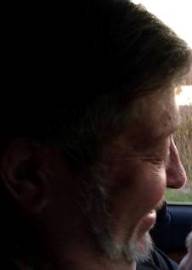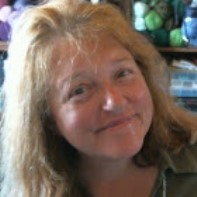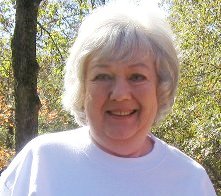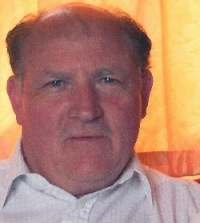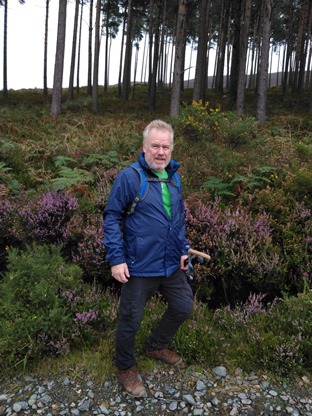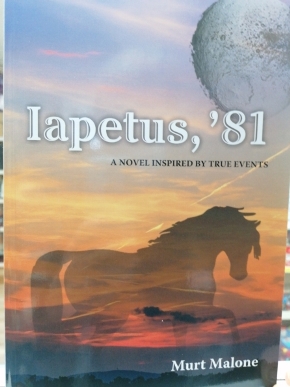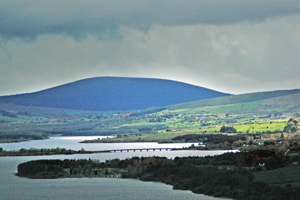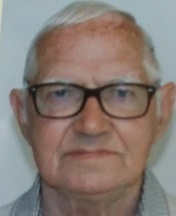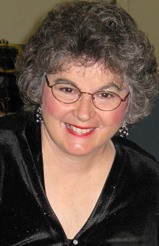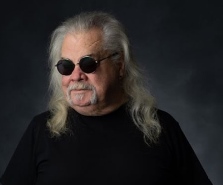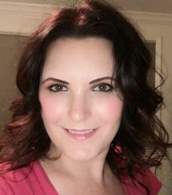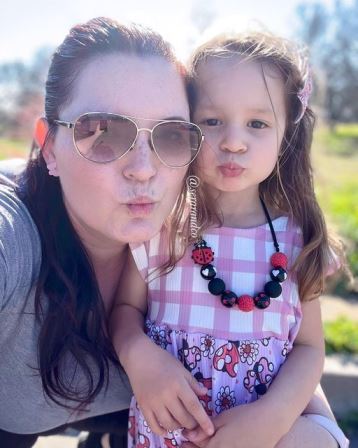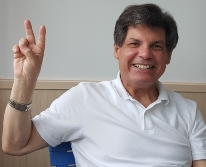
By
Thomas F. O'Neill
On Wings Of Angels
Some people simply believe in angels and for others, angels are
the mere product of mythological stories. But there are still those
people in the world that know angels exist because they intuitively
experience an angel in their life.
When he arrived home that evening, he looked forward to having supper
with his family. When away, he misses his Mother’s home-cooked meals.
His Mother constantly fusses over him, worrying, “perhaps the Army is
not properly feeding my son,” she would say to herself as she piled the
food onto her eldest son’s plate. His two brothers, two sisters, and
father were also thrilled to see him home. The topic of discussion at
their dining room table was always their local Church and the day's
politics. He heard his father’s politics before and in the back of his
mind. He was just looking forward to a night out at their local dance
hall to dance with the girls and listen to the popular tunes of the day.
When he entered the music hall in his clean, pressed military
uniform, the band was playing ‘shall we dance.’ He immediately caught
the attention of a beautiful, bright-eyed, impressionable
seventeen-year-old girl. She was sitting with her friends, listening to
music, drinking a malt soda. With an outstretched hand, he said to her,
"shall we dance." Before she could say no, she was on the dance floor,
their embraced bodies moving with the music.
“I never saw you here before,” she said to him with a bit of excitement in her voice.
“Last two years I was away. I joined the army after high school.”
“I will graduate this year,” she said to emphasize that she is
now a woman, but in a childlike way, she began adjusting her hair.
“I graduated in the class of 1933, and I am only two years older than you.”
“Do you like the Army?”
“Sure, I love to travel and see new places and meet people.”
“Aren’t you worried about a war breaking out somewhere and having to fight in a battle?”
“Oceans surround our country, and we are pretty well protected,
and besides, our President said our country will remain neutral unless
provoked by hostile forces. We will not go to war unless we are attacked
first, and no country will be dumb enough to attack us and start a
war.”
“You sure look nice in your uniform,” she said, “what is your name?”
“Corporal Lawrence Mattock.”
“My name is April Boyer.”
They drank malts that evening and talked until the music ended.
Over the next three days, they saw a movie together, went to a
restaurant, and saw a play at their local Theater. When his leave ended,
he wrote her letters, and she looked forward to them, and he enjoyed
reading her letters. A year after she graduated high school, they were
married.
He took advantage of the military and continued his education. He
was honorably discharged from the service in 1937. Over the years, they
had four children. It was the middle of the great depression, but he
could provide for his family on a mail carrier's salary.
The letters he wrote his wife during his military days were put
in a shoebox that April kept. She enjoyed reading them from time to
time. They reminded her of the innocent times and the youthful love that
they once shared. Their love has matured with the birth of their
children, and they are now adults with financial responsibilities.
They were sitting in their living room when the radio announced
the horrific news of the bombing of Pearl Harbor. They were shocked to
hear about the deaths of the American servicemen. The President
announced that “December 7, 1941, is a date that will live in infamy.”
America was at war, and Lawrence was back in uniform. He was
trained as a fighter pilot, and he sent a photo of himself home to his
wife. In the photo, he was standing in front of his fighter plane,
‘Fighting Angel.’ There was a small note with the picture, “I shall
return to you on Angels Wings.”
She received three beautiful letters a week from her husband.
They were highly poetic letters expressing his deep love for her and
their children. “He is truly a gifted writer,” April told her family.
His letters spoke of how much he yearned for his family.
She wrote him every day as well, telling him about her daily
activities with their children and how much they miss him. She was
frightened for his safety, but she remained strong for her children. She
did not talk about how dangerous his missions were because she did not
want to frighten her children. In their eyes, her husband is a hero.
Before his 25th bombing mission in 1943, he felt an unsettling
feeling come over him. He quickly finished up a letter to his wife, and
he then did something out of the ordinary. He handed the ceiled letter
to his friend Lt. Bob McCracken.
“If anything should happen to me,” he said to him, “can you see to it that my wife gets this letter.”
“Look,” his friend said to him, “I will give this letter back to you when you return.”
April’s husband never returned from that mission because the
Japanese shot down his plane in the south pacific. His friend had every
intention of getting the letter to April, but he too was a fatality of
war. The unopened letter was mistakenly placed with his friend’s
belongings in a large box.
Lt. McCracken was unmarried, so his belongings were
hand-delivered to his Mother, but she was too distraught to deal with
them. The box containing her son’s belongings with Lawrence’s unread
letter was eventually placed in her attic and soon forgotten about.
April was still a young mother, and she never remarried. Over the
years, she became a teacher, a grandmother, and a great grandmother. On
lonely nights she would read her husband’s old letters. Her
great-granddaughter once noticed a tear roll down April’s cheek when
reading the old letters.
She knew her husband’s letters by heart. They made her feel
loved, and they reminded her how special she was to her husband. In many
ways, she feels she still is special to him. She enjoys showing her
great-granddaughter the old photograph of the fighting angel. With the
small note, “I shall return to you on angels wings.” From time to time,
her great-granddaughter also read the old letters; deep down inside, she
felt that she knew her great-grandpa, Lawrence, from reading his
handwritten letters.
Bob McCracken’s niece had signed the final papers on the sale of
his mother’s old home. The new owner soon came across a few forgotten
boxes that were left in an attic closet. The owner’s son, Lawrence
Boyer, was home on leave from the army. He was helping his mother move
into her new home. His curiosity got the best of him, and he went
through the old boxes to see what was in them. The one box had old
Christmas lights that hadn’t been used in a very, very long time. He
noticed that the other box was never opened. Out of curiosity, though,
he opened it, and when he saw the old War World II leather, fighter
pilot jacket, he excitedly yelled to his mother, “Mom, you are not going
to believe this!!!!!!!”
He quickly brought the old dusty Box down stares to their
kitchen. There were old photographs and letters from the war inside the
Box. Her son excitedly tried on the Leather Jacket, “it fits,” he said.
His mother noticed the unopened letter. She also noticed that the
address on the envelope was different from the opened letters, “the
woman that the letter is addressed to is probably dead,” she said, “the
war ended over 60 years ago.”
When Lawrence held the letter in his hand, he noticed the return address.
“Mom, the return address is the Army barracks where I am assigned,” he said, “this can’t be just a coincidence, can it?”
“I would just go to the post office and mail it,” she said.
“I want to deliver it in person.”
“You have always been a romantic,” she said, “but the address is
about two thousand miles away. It would be easier just to mail it.”
“I feel it is the proper thing to do. After all, he was a fellow
soldier.” While placing the letter in the inside pocket of that old but
new leather jacket, “she might still be alive, and besides, she was
meant to have it,” he said.
April, 89 years old, and with her health failing, “I am not ready
to die yet,” she told her great-granddaughter as she lay in her
hospital room.
She was uncomfortable with the thought of death and the unknown.
She never really believed in heaven or hell. But the thought of angels
has always brought her great comfort. Her husband named his plane
‘fighting angel’ to ease her worry. She was uncomfortable about dying
and leaving her great-granddaughter behind.
“I have unfinished business,” she told her great-granddaughter, “dying will have to wait.”
Lt. Lawrence Boyer hitched a ride on a Military Police cargo plane.
“So, what is the urgency?” the pilot asked him.
“Well, I am still on leave, but I need to deliver this letter.”
“What? Are you trying to get brownie points with a general or something?” the co-pilot asked him while the pilot laughed.
“The letter was written during World War II, and the woman it was written to never received it,” he said.
“How did you come across it? Are you a military historian or something?” the co-pilot asked him.
“I found it in my mother’s attic.”
“What does it say?” the Pilot asked him.
“I didn’t read it”
“Why not?” the co-pilot asked.
“Well, for one thing, it is not addressed to me, and it is not any of my business. I wouldn’t want someone reading my mail.”
“Hey dude,” said the co-pilot, “World War II ended in 1945 that
is 62 freaken years ago. What could that letter say that has any
relevance to now?” the co-pilot said to him.
“She might still be alive, and it might be of some sentiment to
her,” he said, “something deep inside tells me that I need to get this
letter to her.”
As April’s great-granddaughter rushed out of her front door, a young Army Lieutenant walked towards the door.
“Look,” she said, “my great grandmother is very, very ill, and I don’t have time to talk to an army recruiter right now.”
“I am not a recruiter,” he said, “I am just hand-delivering a letter.”
“Since when does the Army deliver mail?” she asked.
“Since the American Revolution,” came the reply.
“Who is it for?” she asked.
“April Mattock,” he replied.
“Well, I am April, but my family calls me Angel,” she said, “I am
not joining the army, so it is no use talking. Besides, I am only
seventeen and in my last year of high school.”
“I don’t think this letter is for you,” he said with amusement in his voice.
“Well, my nana’s name is April too,” she said, “she’s my great grandmother, and she is way too old for the Army, she’s 89.”
“Can I see her?” he asked.
“What for?” she asked him.
“So I can give her this letter,” he said.
“Look,” she said, “she’s in the Hospital. Is it that important?”
“It might be to her,” he said.
“You can follow me there in your military Jeep,” she said, “if
you want.” She walked past the military Jeep, got into a parked car, and
quickly drove away.
As they were taking the elevator to her great-grandmother's floor
at the hospital, “what is so important about that letter?” she asked
him, “that the Army would send someone to hand-deliver it.”
“This letter was written to her over 60 years ago. It was found unopened in my mother’s attic, and it was never delivered.”
“Who is it from?” she asked.
“Lawrence Mattock,” he said, “the return address is my army barracks where I am stationed now.”
“Really?” she said, “he is my great-grandpa. We love reading his
old letters, and they are wonderfully beautiful, he really loved my
Nana.”
The elevator door opened, and as they stepped out in the corridor.
“So you are not here on official business?” she asked, “you went out of your way to deliver this letter?”
“I felt it was important that I deliver it,” he said, “I just felt it was the right thing to do.”
“That might have been the last letter he wrote,” she said, “he
was killed in the war. I think it’s sweet that you went out of your way
to deliver it.”
“Hello, Nana,” Angel said to her great-grandmother in her hospital bed.
“Who is this fine-looking officer?” she asked Angel.
“He has a special letter for you from great-grandpa Lawrence.”
“How do you do, mam,” he said as he shook her hand, “this letter is addressed to you, mam,” handing her the letter.
“How can that be?” she asked, slightly amused, “it’s from my Lawrence?”
“
Yep,” said Angel in an excited tone.
“Get me my glasses,” she said, “how can this be?”
Angel walked around the hospital bed and opened a drawer in a cabinet. She then handed her the eyeglasses.
She opened the letter, and immediately noticed it was her
husband's handwriting. Tears welled up in her eyes as she began to read
the letter.
“My dearest Angel,
I know I may seem far away, but I am with you. I will always be
with you. Our love has no boundaries. It is a timeless love. I am
waiting here, patiently, for your gentle touch, your warm smile, and
your loving embrace.
I will visit you and our children often on angel's wings. When
you feel a gentle breeze, I am there. When you feel a warm glow, I am
there. When the babies cry, we will watch them grow, and they will learn
more than we will ever know.
I am letting you know that I am there with you no matter the
difficulty or the circumstance. My gifts to you will always be loving
thoughts and a gentle caress of the heart.
When you see the colors of the rainbow so pretty in the sky, they
will also be on the faces of Angels passing by. When friends shake your
hand and say, 'how do you do,' they are really saying, 'I love you.'
Our love, April, is timeless and eternal like an angel’s love.
Your fighting Angel,
Love always,
Your fighting Angel"
“It is truly from Lawrence,” she said as the tears rolled down her
cheek, “he wrote me a letter. He is waiting for me now, and he waited
for me over all these years. He still loves me; he sent me one of his
love letters, one of his beautiful love letters.”
Angel’s eye’s welled up with tears when she saw how the letter touched her great-grandmother.
“What is your name,” April asked the young officer.
“Lawrence,” he said, “Lawrence Boyer.”
“Boyer was my maiden name,” she said.
She told them the story of how she met Lawrence, her Fighting
Angel, on the dance floor when she was seventeen. The age her
great-granddaughter is now.
“How did my Lawrence send you the letter?” she asked the young officer.
But Angel interrupted Lt. Boyer before he could speak because she
didn’t want him to spoil the moment for her great-grandmother.
“He was ordered to deliver it from people high up in the Military,” Angel said to her.
“I understand,” April said as she winked at Lawrence, “soon, very soon, I will be with my fighting angel.”
“We are going to let you rest now, Nana,” Angel said to her.
“My Lawrence worked as a mail carrier before the war,” she said
with a big smile on her face, “like you, he delivered important mail.”
April once again winked at the young officer.
Out in the corridor, Angel said to Lt. Boyer, “thank you, so much, that was really, really sweet of you. It made her so happy.”
“I feel as if I was supposed to deliver the letter as if I was on some sort of important mission.”
“Well, thank you, I can’t wait to read her letter,” she said, “I read all of his letters.”
April lay in her hospital bed a few days later without fear of
death because she knew her fighting angel was waiting for her. She told
her great-granddaughter, “don’t let life pass you by, seize the moment,
embrace the here and now. That is all we have, the here and now,” she
repeated, “so take full advantage of it. Take advantage of all the
opportunities that lie within you. The greatest opportunities in life
are within us.”
“I remember reading that in one of great-grandpa Lawrence’s
letters,” Angel said, “I will keep his letters for you, and I will show
my children someday the beautiful letters he wrote you.”
As a Nurse was administering April’s medication, she noticed
through the window a magnificent rainbow in the sky, “What a gorgeous
rainbow,” the Nurse said.
April clasped her hands together and said, “I must see it.”
“Your very weak, April,” the Nurse said.
“Oh, please,” she said, “I must see it”
The Nurse helped her out of bed and slowly and patiently walked
her over to the window. April looked at the magnificent rainbow, "when
you see the colors of the rainbow so pretty in the sky, they will also
be on the faces of Angels passing by. When friends shake your hand and
say, 'how do you do,' they are really saying, 'I love you,'” April said
out loud with a tear rolling down her cheek.
“That is so beautiful. Are they the words to a song?” the nurse asked.
“It was in a letter my Lawrence wrote me,” she said with tears in her eyes, “he is waiting for me.”
April quietly passed away that evening, “tell great-grandpa
Lawrence that I love him too,” Angel told her. She held April’s hand,
unable to hold back the tears.
The young Lieutenant could not get Angel off his mind back on the
army base. He began to write her, and eventually, he started visiting
her. He went through some of April’s old photographs and letters that
Angel took the possession of, and he also came across an old photograph
of Angel’s great-grandfather, standing next to his fighter plane,
‘Fighting Angel,’ with a little note, “I shall return to you on Angels
Wings.” He wondered to himself, “was he behind my delivering the letter
to April. Was he behind Angel and me getting together?” They also came
across an old photograph of Lt. Bob McCracken, “That is uncanny,” Angel
said.
“What is?” he asked.
“How much you look like him,” she said.
“You think?”
“Yea,” she said, “you really do”
Angel and Lawrence exchanged their wedding vows in an open garden
with beautiful green grass and flowers in full bloom in an open garden.
People began to notice the beautiful rainbow in the sky, including the
bride and groom.
“Look,” said Angel, “my Nana and great-grandpa Lawrence is giving
us our wedding gift.” With tears welling up in her eyes, she looked up
at the beautiful rainbow and softly said, “thank you for the beautiful
gift.”
Angel’s husband is now a Captain in the U.S. Army. He and Angel
have two children; one is a boy who they named Lawrence, he has the
nickname, Lance. They also have a girl named after her
great-great-grandmother, April; she also has her mother’s nickname,
Angel.
Captain Boyer may feel that he cannot write like his wife’s
great-grandfather. But he still takes the time to write his Angel every
day. He also goes out of his way to tell people his story, with the
utmost exuberance, how he met his wife on a very important mail carrier
mission.
“There were forces at play in helping me deliver that letter on
that faithful day. It was something I had to do,” he said, “and in doing
so I got my greatest reward, my Angel.”
Always with love from Suzhou, China
Thomas F O’Neill
Email: introspective7@hotmail.com
WeChat: Thomas_F_ONeill
U.S. Voice mail: (800) 272-6464
China Mobile 011 (86) 13405757231
Skype: thomas_f_oneill
Twitter: https://twitter.com/Thomas_F_ONeill
Linkedin: https://www.linkedin.com/in/thomas-f-o-neill-6226b018/
Instagram: https://www.instagram.com/thomas_f_oneill/
Facebook: http://facebook.com/thomasf.oneill.3/
Click on author's byline for bio and list of other works published by Pencil Stubs Online.
